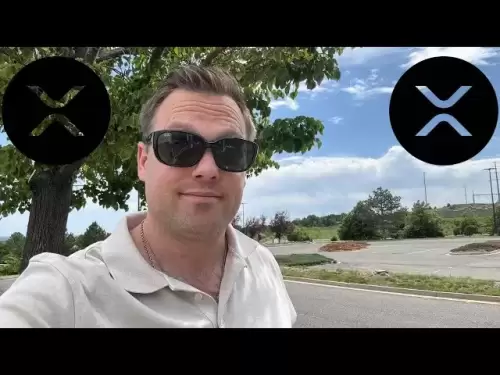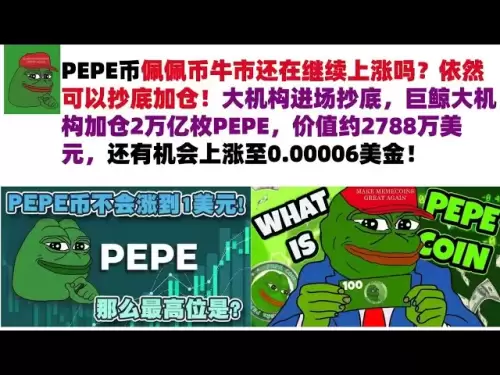-
 Bitcoin
Bitcoin $104,092.7082
-3.90% -
 Ethereum
Ethereum $2,500.1510
-9.45% -
 Tether USDt
Tether USDt $1.0003
0.02% -
 XRP
XRP $2.1161
-5.92% -
 BNB
BNB $644.7652
-3.34% -
 Solana
Solana $143.3632
-10.62% -
 USDC
USDC $0.9995
-0.03% -
 Dogecoin
Dogecoin $0.1728
-9.80% -
 TRON
TRON $0.2700
-2.70% -
 Cardano
Cardano $0.6282
-9.47% -
 Hyperliquid
Hyperliquid $38.5896
-7.04% -
 Sui
Sui $2.9976
-10.50% -
 Chainlink
Chainlink $13.0865
-10.97% -
 UNUS SED LEO
UNUS SED LEO $8.8697
1.35% -
 Stellar
Stellar $0.2563
-7.44% -
 Bitcoin Cash
Bitcoin Cash $401.8213
-6.21% -
 Avalanche
Avalanche $18.8844
-11.63% -
 Toncoin
Toncoin $2.9457
-8.46% -
 Shiba Inu
Shiba Inu $0.0...01163
-9.64% -
 Hedera
Hedera $0.1538
-10.65% -
 Litecoin
Litecoin $82.4785
-9.46% -
 Polkadot
Polkadot $3.7430
-9.96% -
 Ethena USDe
Ethena USDe $1.0004
-0.01% -
 Monero
Monero $306.8529
-6.55% -
 Dai
Dai $0.9998
0.01% -
 Bitget Token
Bitget Token $4.4842
-5.28% -
 Pepe
Pepe $0.0...01069
-13.19% -
 Uniswap
Uniswap $7.0207
-13.47% -
 Pi
Pi $0.5498
-13.03% -
 Aave
Aave $268.2967
-9.88%
What is Metcalfe’s law for financial contracts, loans, and other agreements.
Metcalfe's law in financial contracts suggests that increased connectivity and participation in a platform exponentially enhance its value and benefits for all users, including greater access to financial products, lower transaction costs, and improved risk management.
Nov 12, 2024 at 03:16 pm

Understanding Metcalfe's Law in the Context of Financial Contracts, Loans, and Agreements
Introduction
Metcalfe's law is a fundamental principle in network analysis that asserts that the value of a network is proportional to the square of the number of its users. This concept, originally applied to telecommunications networks, has been extended to various domains, including financial markets and blockchain-based systems.
Metcalfe's Law for Financial Contracts
In the realm of finance, Metcalfe's law suggests that the value of a financial network or platform increases exponentially with the number of participants. This is because the greater the number of interconnected users, the more valuable the network becomes for each individual user.
Key Implications
- Increased Connectivity: More users on a financial platform lead to enhanced connectivity and access to a wider range of financial products and services.
- Higher Liquidity: The increased connectivity facilitates greater liquidity, making it easier for buyers and sellers to find each other and execute transactions.
- Reduced Transaction Costs: The network effect created by Metcalfe's law can lead to reduced transaction costs as the platform becomes more efficient and scalable.
- Enhanced Security: A larger user base can contribute to the overall security of the network, making it more resilient to fraud and cyberattacks.
Metcalfe's Law for Loans
Metcalfe's law can also be applied to the lending industry. A platform that connects a large number of lenders and borrowers offers several advantages:
Benefits for Borrowers
- Greater Access to Capital: A platform with a wider network of lenders provides borrowers with a wider pool of potential lenders, increasing their chances of securing a loan.
- Lower Interest Rates: Increased competition among lenders can drive down interest rates, reducing the cost of borrowing for borrowers.
- Tailored Financial Products: The diversity of lenders on a platform allows borrowers to find specialized products that meet their specific needs.
Benefits for Lenders
- Expanded Reach: Lenders can access a broader market of potential borrowers, diversifying their lending portfolio and reducing risk.
- Reduced Due Diligence Costs: The platform's ability to verify and screen borrowers can reduce the due diligence costs for lenders.
- Enhanced Risk Management: The data collected on the platform can help lenders assess risk more effectively and make informed lending decisions.
Metcalfe's Law for Other Financial Agreements
Metcalfe's law can extend to various other types of financial agreements, such as insurance policies and derivatives contracts:
Insurance Policies
- Wider Risk Pool: A platform that connects multiple insurance providers creates a larger risk pool, enabling more accurate and affordable premium calculations.
- Tailored Insurance Products: The platform allows insurers to develop customized insurance products that meet the unique needs of individual policyholders.
- Improved Claims Processing: The connectivity and data-sharing capabilities of the platform can streamline claims processing and enhance customer experience.
Derivatives Contracts
- Increased Liquidity: A platform connecting a large number of traders provides greater liquidity for derivatives contracts, facilitating faster and more efficient transactions.
- Reduced Counterparty Risk: The platform's due diligence and risk management capabilities reduce counterparty risk for traders.
- Enhanced Price Discovery: The aggregated data on the platform supports more accurate price discovery for derivatives contracts, leading to fairer market valuations.
Disclaimer:info@kdj.com
The information provided is not trading advice. kdj.com does not assume any responsibility for any investments made based on the information provided in this article. Cryptocurrencies are highly volatile and it is highly recommended that you invest with caution after thorough research!
If you believe that the content used on this website infringes your copyright, please contact us immediately (info@kdj.com) and we will delete it promptly.
- Hyperliquid Continues to Outperform the Market, Rallying Again After Unit Spot Token Infrastructure Founder Reveals Two New Tickers
- 2025-06-13 12:00:28
- Is the Arbitrum (ARB) Price Set to Explode? This Chart Reveals the Comeback No One Saw Coming
- 2025-06-13 12:00:28
- PayPal Taps a Payments-Focused Blockchain to Expand Its PYUSD Stablecoin
- 2025-06-13 11:55:11
- Gold Nears a Critical Technical Threshold as Macroeconomic Uncertainties and Geopolitical Tensions Drive Investors to Safer Assets
- 2025-06-13 11:55:11
- Tether Expands Its "Dual Pillar" Investment Strategy with a Minority Stake in Elemental Altus Royalties
- 2025-06-13 11:50:12
- Circle Announces USDC Is Live on the XRP Ledger (XRPL) Mainnet
- 2025-06-13 11:50:12
Related knowledge

Cryptocurrency K-line chart technical analysis manual: Learn these methods to increase your chances of making a profit
Jun 11,2025 at 11:21pm
Understanding the Basics of K-line ChartsK-line charts, also known as candlestick charts, are one of the most widely used tools in cryptocurrency trading. Each K-line represents a specific time period and provides information about the open, high, low, and close prices during that interval. The body of the candle shows the relationship between the openi...

The Importance of K-line Chart Analysis in Cryptocurrency Trading: From Theory to Practical Cases
Jun 11,2025 at 04:56pm
Understanding the Basics of K-line ChartsK-line charts, also known as candlestick charts, are a visual representation of price movements over specific time intervals. Each K-line encapsulates four critical data points: the opening price, closing price, highest price, and lowest price within a given timeframe. These charts originated in Japan during the ...

Cryptocurrency K-line Chart Interpretation Guide: How Novices Can Quickly Master the Basics of Technical Analysis
Jun 10,2025 at 08:56pm
Understanding the Basics of K-line ChartsK-line charts, also known as candlestick charts, are one of the most widely used tools in cryptocurrency trading for analyzing price movements. Each K-line represents a specific time period and shows the opening, closing, high, and low prices during that interval. For novices, grasping how to read these elements ...
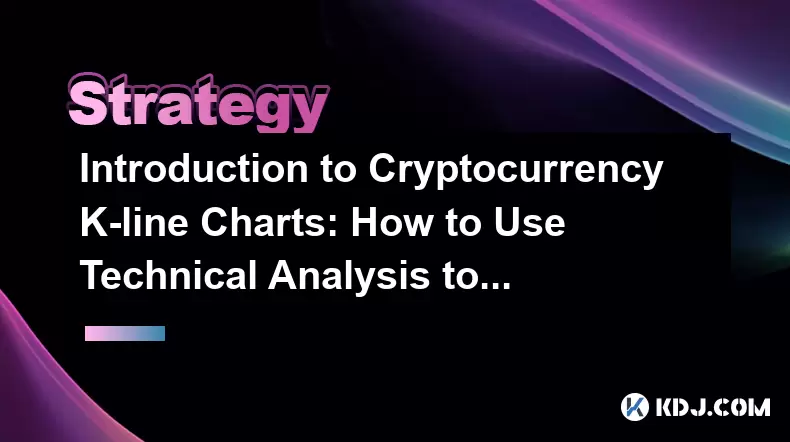
Introduction to Cryptocurrency K-line Charts: How to Use Technical Analysis to Optimize Trading Decisions
Jun 12,2025 at 03:56pm
Understanding the Basics of K-line ChartsK-line charts, also known as candlestick charts, are one of the most essential tools used in cryptocurrency trading. Originating from Japan, these charts visually represent price movements over specific time intervals. Each candlestick displays four key pieces of information: the opening price, closing price, hig...
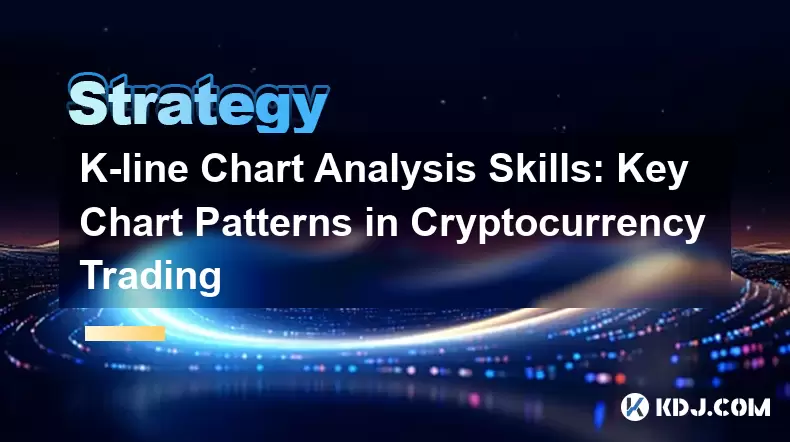
K-line Chart Analysis Skills: Key Chart Patterns in Cryptocurrency Trading
Jun 13,2025 at 10:21am
Understanding the Basics of K-line Charts in Cryptocurrency TradingK-line charts, also known as candlestick charts, are essential tools for analyzing price movements in cryptocurrency markets. Each candlestick represents a specific time frame and provides information about the open, high, low, and close (OHLC) prices during that period. In crypto tradin...
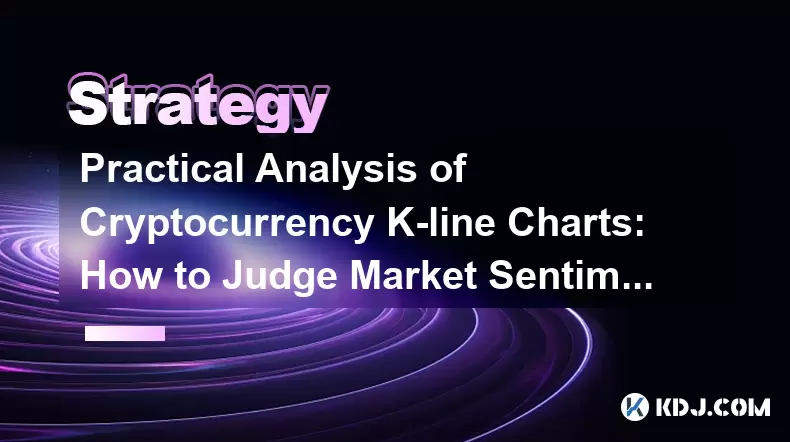
Practical Analysis of Cryptocurrency K-line Charts: How to Judge Market Sentiment through Charts
Jun 10,2025 at 09:42pm
Understanding the Basics of Cryptocurrency K-line ChartsCryptocurrency K-line charts, also known as candlestick charts, are essential tools for analyzing price movements in the crypto market. Each candlestick represents a specific time frame, such as 1 minute, 5 minutes, or even daily intervals. The structure of a K-line includes four key data points: o...

Cryptocurrency K-line chart technical analysis manual: Learn these methods to increase your chances of making a profit
Jun 11,2025 at 11:21pm
Understanding the Basics of K-line ChartsK-line charts, also known as candlestick charts, are one of the most widely used tools in cryptocurrency trading. Each K-line represents a specific time period and provides information about the open, high, low, and close prices during that interval. The body of the candle shows the relationship between the openi...

The Importance of K-line Chart Analysis in Cryptocurrency Trading: From Theory to Practical Cases
Jun 11,2025 at 04:56pm
Understanding the Basics of K-line ChartsK-line charts, also known as candlestick charts, are a visual representation of price movements over specific time intervals. Each K-line encapsulates four critical data points: the opening price, closing price, highest price, and lowest price within a given timeframe. These charts originated in Japan during the ...

Cryptocurrency K-line Chart Interpretation Guide: How Novices Can Quickly Master the Basics of Technical Analysis
Jun 10,2025 at 08:56pm
Understanding the Basics of K-line ChartsK-line charts, also known as candlestick charts, are one of the most widely used tools in cryptocurrency trading for analyzing price movements. Each K-line represents a specific time period and shows the opening, closing, high, and low prices during that interval. For novices, grasping how to read these elements ...

Introduction to Cryptocurrency K-line Charts: How to Use Technical Analysis to Optimize Trading Decisions
Jun 12,2025 at 03:56pm
Understanding the Basics of K-line ChartsK-line charts, also known as candlestick charts, are one of the most essential tools used in cryptocurrency trading. Originating from Japan, these charts visually represent price movements over specific time intervals. Each candlestick displays four key pieces of information: the opening price, closing price, hig...

K-line Chart Analysis Skills: Key Chart Patterns in Cryptocurrency Trading
Jun 13,2025 at 10:21am
Understanding the Basics of K-line Charts in Cryptocurrency TradingK-line charts, also known as candlestick charts, are essential tools for analyzing price movements in cryptocurrency markets. Each candlestick represents a specific time frame and provides information about the open, high, low, and close (OHLC) prices during that period. In crypto tradin...

Practical Analysis of Cryptocurrency K-line Charts: How to Judge Market Sentiment through Charts
Jun 10,2025 at 09:42pm
Understanding the Basics of Cryptocurrency K-line ChartsCryptocurrency K-line charts, also known as candlestick charts, are essential tools for analyzing price movements in the crypto market. Each candlestick represents a specific time frame, such as 1 minute, 5 minutes, or even daily intervals. The structure of a K-line includes four key data points: o...
See all articles
























